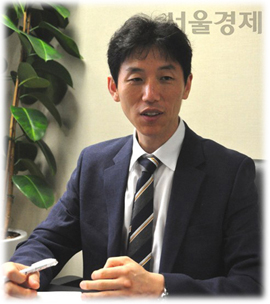| 일 | 월 | 화 | 수 | 목 | 금 | 토 |
|---|---|---|---|---|---|---|
| 1 | 2 | 3 | 4 | 5 | ||
| 6 | 7 | 8 | 9 | 10 | 11 | 12 |
| 13 | 14 | 15 | 16 | 17 | 18 | 19 |
| 20 | 21 | 22 | 23 | 24 | 25 | 26 |
| 27 | 28 | 29 | 30 | 31 |
- political organization
- Orderliness of Choice
- Value Systems
- politics and war
- Political Regime
- Mathematical Model of politics
- Task Delegates of the Ruler: Inner Circle
- new political science
- Power
- Regime Change
- politics of Inner Circle
- politics
- the 3rd Law of politics
- Differences in Individual Abilities and Tendencies
- Order of Choice
- Samjae Capacities
- Samjae Capacity
- political phenomena
- Cohesion Force
- survival process theory
- Political Change
- Mathematical Model of political science
- Political power
- Political Regimes
- Canonical Politics
- 1st Law of politics
- Operation of the 2nd Law
- mechanism of politics
- power and organization
- the 2nd law
- Today
- Total
New Political Science
b. Formalization of the 2nd Law 본문
b. Formalization of the 2nd Law
The 2nd law here refers to the following:
[Ch.3.203] Cohesion force(\( \vec{S} \)) and armament level(\( [Ar] \)) constitute security force(\( \vec{D} \)), while invasion threat(\( \vec{T_{HR}} \)) from outside the political organization and ideological diversity (\( [Iv] \)) within it constitute political crisis(\( \vec{R_{SK}} \)). Political crisis represents political loss, while security force represents political benefit.
[Ch.3.204] Security force is directly proportional to both cohesion force and armament level (i.e., security force is proportional to the product of cohesion force and armament level).
[Ch.3.205] Political crisis is directly proportional to both invasion threat and ideological diversity (i.e., political crisis is proportional to the product of invasion threat and ideological diversity).
[Ch.3.206] If security force is greater than political crisis, the political organization(g) will gain benefit; conversely, if security force is less than political crisis, the political organization (g) will lose benefit.
[Ch.3.207] In most cases, security force and political crisis are in balance. If benefit becomes too great, the political organization will dominate other political organizations, while if benefit becomes too small, the political organization will fail.
[Ch.3.208] In a political organization(g) of sufficient size, an increase in cohesion force means an increase in power structure within the organization.
Therefore, the following phenomena occur:
[Ch.3.209] The security force(\( \vec{D} \)) and political crisis(\( \vec{R_{SK}} \)) of existing political organizations tend to balance each other out.
[Ch.3.210] If the security force becomes greater than the political crisis, the political organization(g) experiences political growth and expansion by increasing its political profit. (Therefore, the size of the closed curve increases.
[Ch.3.211] As the conditions for survival improve, the cohesion force between political members weakens due to a decrease in their will to struggle[Ch.1.7].
[Ch.3.212] This causes the security force of the political organization (g) to decrease, and it reaches a balance with the political crisis.
[Ch.3.213] If ideological diversity increases or the invasion threat from outside increases, the political crisis grows. (The size of the closed curve decreases.)
[Ch.3.214] As the conditions for survival become more difficult, the will to struggle strengthens and the cohesion force increases.
[Ch.3.215] Consequently, the security force increases, and it reaches a balance with the political crisis. If the security force continues to be smaller than the political crisis, the political organization will fail.
This can also be explained by the same principle in the opposite process. That is, even if security force(\( \vec{D} \)) in [Ch.3.210] or political crisis(\( \vec{T_{HR}} \)) in [Ch.3.213] decreases, the security force and political crisis of political organization g reach a balance by the same mechanism.
Therefore, as an implication of the 2nd law of Political Phenomena, several important implications can be made as follows:
[Ch.3.216] Generally, as invasion threats against a political organization increase, the cohesion force proportionally increases.
[Ch.3.217] Generally, as the actual profit (security force) for a political organization increases, the cohesion force proportionally decreases.
[Ch.3.218] Generally, as the ideological diversity within a political organization increases, the cohesion force should proportionally increase.
'Mechanism of Politics' 카테고리의 다른 글
| a. Explanation of Key Concepts of the 2nd Law (0) | 2023.12.12 |
|---|---|
| (2) Interpretation and Examples of the 2nd Law (0) | 2023.12.12 |
| a. ㉡ Schematic Understanding of the 2nd Law (0) | 2023.12.12 |
| a. ㉠ Details of the 2nd Law (0) | 2023.12.12 |
| B. (1) Intuitive Explanation through Diagrams (0) | 2023.12.12 |


